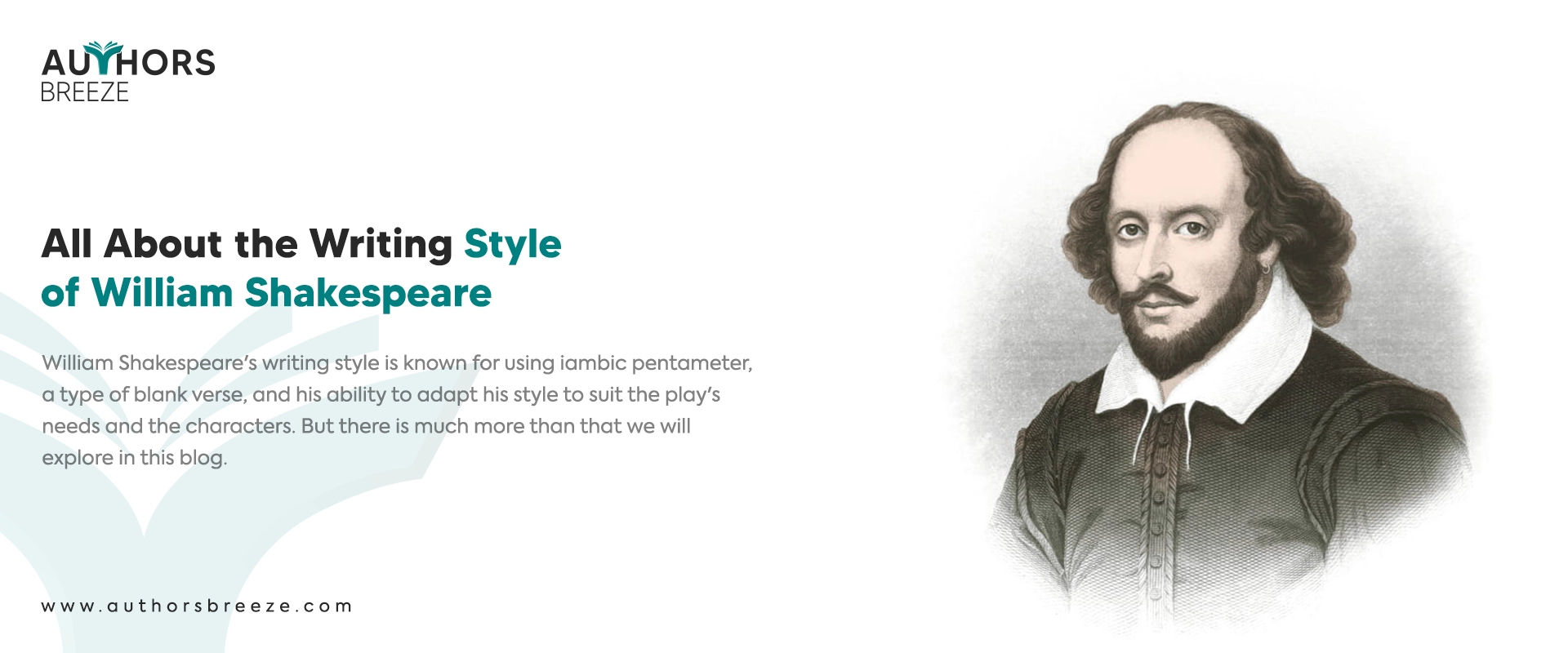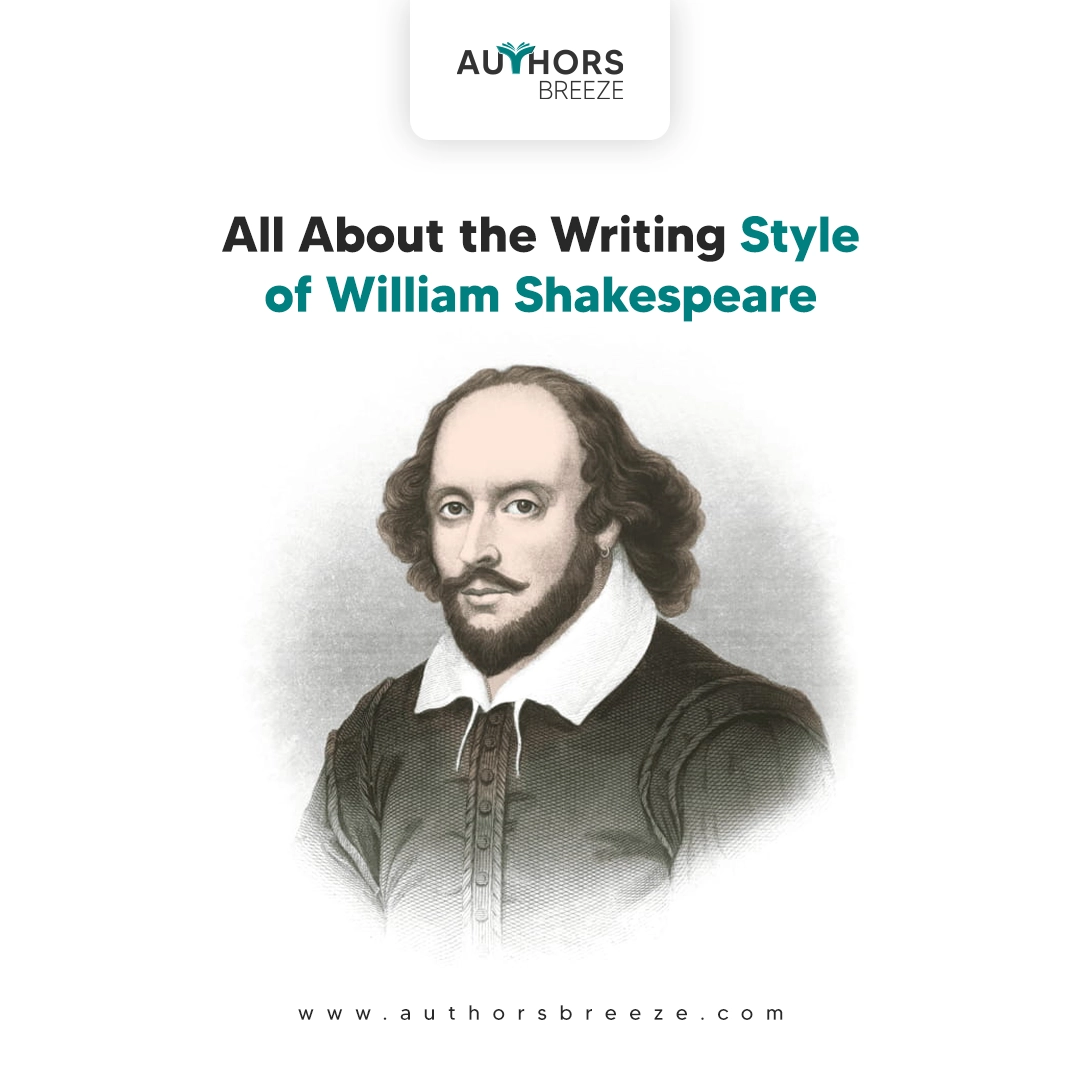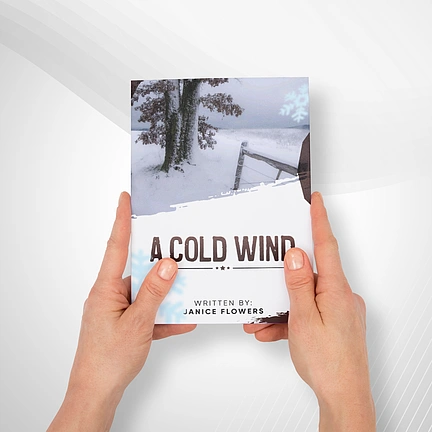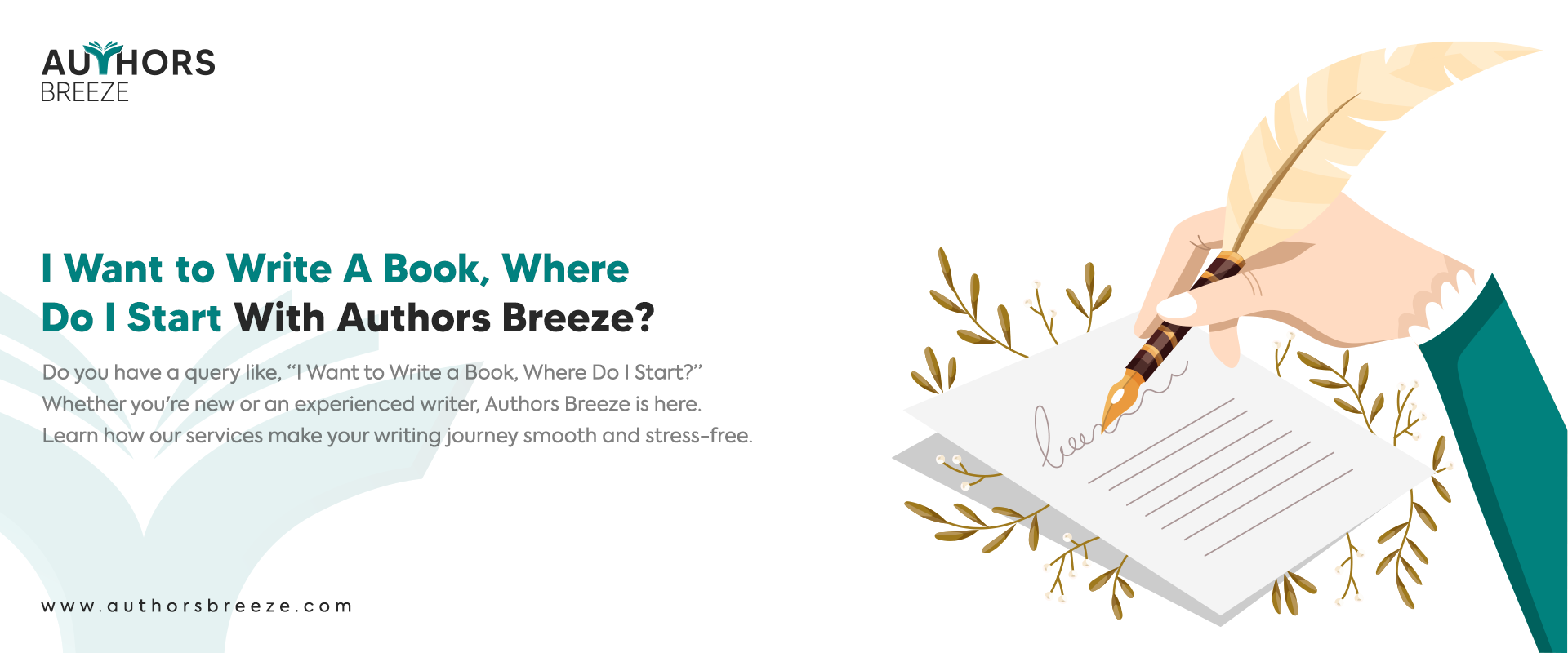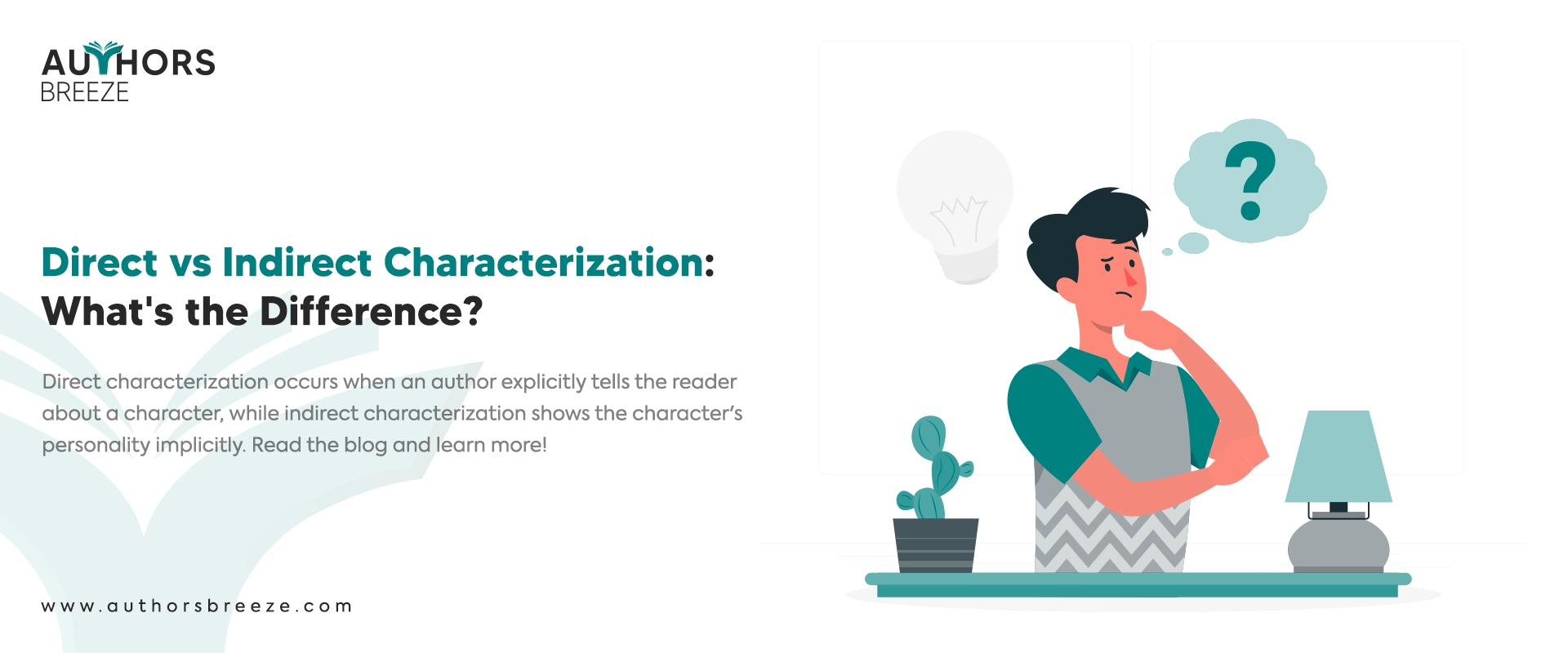Don’t Have Time To Read? Listen To Writing Style of William Shakespeare Instead!
Key Takeaways: The Writing Style of William Shakespeare
- The writing style of Shakespeare is characterized by a masterful command of language, employing a rich vocabulary, striking imagery, and a variety of literary devices that contribute to the enduring power of his plays and sonnets.
- His works feature deeply complex, flawed, and relatable characters who grapple with universal themes like love, ambition, revenge, mortality, and identity, making his stories timeless and resonant.
- Shakespeare effectively used dramatic techniques, such as soliloquies (inner thoughts spoken aloud), monologues (speeches to other characters), and varied tones and moods to engage audiences and explore the inner lives of his characters.
- Through his plays, poems, and sonnets, Shakespeare left an indelible mark on the English language and literature, influencing countless writers and continuing to be performed and studied centuries later.
Uplift Story Just Like Shakespeare
Let our quill craft words that stir hearts and endure the test of time. So engage our ghostwriting artistry today, and have thy story written in immortal ink!
Introduction
William Shakespeare is a name that almost everyone knows, whether they’ve read his works or not. Often called the “Bard of Avon,” Shakespeare is one of the most famous writers in history.
His plays and poems have been performed, studied, and admired for centuries.
But what makes Shakespeare so special?
His unique writing style is a big reason why he is still celebrated today.
The writing style of Shakespeare combines creativity, intelligence, and emotion in ways that few writers have ever matched. He had a way of using language to express complex ideas, create memorable characters, and tell stories that connect with people on a deep level.
Whether it’s the tragedy of Hamlet, the romance of Romeo and Juliet, or the humor in A Midsummer Night’s Dream, his works cover a wide range of emotions and themes.
In this blog, we’ll explore everything about the writing style of Shakespeare, from his use of language to his ability to create unforgettable characters. But first, let’s take a closer look at Shakespeare’s life, family, and career to understand the man behind the words.
The Life, Family, and Career of William Shakespeare
William Shakespeare was born on April 23, 1564, in the small town of Stratford-upon-Avon in England.
His father, John Shakespeare, was a glove maker and an alderman, while his mother, Mary Arden, came from a wealthy farming family.
Shakespeare was the third of eight children, though many of his siblings did not survive childhood—a common occurrence in those days.
Early Life and Education
Shakespeare likely attended the local grammar school in Stratford, where he would have studied Latin, classical literature, and rhetoric.
While there are no detailed records of his education, it is clear from his works that he was well-read and had a deep understanding of history, mythology, and human behavior.
Marriage and Family
At the age of 18, Shakespeare married Anne Hathaway, who was 26 at the time.
They had three children: their first daughter, Susanna, and then twins, Hamnet and Judith.
Sadly, Hamnet died at the age of 11, an event that may have influenced Shakespeare’s later works, particularly the themes of grief and loss.
Career in London
By the late 1580s or early 1590s, Shakespeare moved to London to pursue a career in theatre. He became an actor, playwright, and eventually a shareholder in the Lord Chamberlain’s Men, a popular acting company. This group later became the King’s Men when they gained the patronage of King James I.
Work
Shakespeare wrote 39 plays, 154 sonnets, and several long narrative poems.
His works spanned genres, including tragedies like Macbeth, comedies like Twelfth Night, and histories like Henry V.
His plays were performed at the famous Globe Theatre, where audiences from all walks of life gathered to watch his masterpieces.
Legacy
Shakespeare’s career lasted over two decades, and his works left an indelible mark on English literature. His ability to capture the human experience with such depth and creativity is why his plays and poems are still widely read, performed, and studied.
William Shakespeare’s Greatest Influences
Just like all of us, Shakespeare didn’t come up with his amazing plays and poems all by himself. He was inspired by many things! Let’s see what some of those key influences were:
Ancient Stories
Shakespeare studied classic Greek and Roman books. He loved authors like Ovid and Virgil. This helped him write about timeless themes like love, betrayal, and how things change, just like in stories we tell today.
Real-Life History
Shakespeare wrote plays about real English kings and queens, like “Henry IV” and “Richard III.” These plays entertained people and also talked about important things like good leadership and what’s right and wrong.
Everyday Life
Shakespeare was brilliant at understanding how people really feel. His characters, like the jealous Othello and the ambitious Macbeth, feel real because they have the same emotions we all experience.
Key Insight:
“Othello and Macbeth are some of the best examples of round characters.”
Other Writers
Shakespeare learned from other talented writers of his time, like Christopher Marlowe and Geoffrey Chaucer. The competition with other playwrights in London pushed him to be even more creative.
The Bible
Religion was very important in Shakespeare’s time. The Bible influenced many of his plays, like “Hamlet,” by exploring ideas about sin, forgiveness, and what’s morally right.
The Linguistic Brilliance of William Shakespeare
One of the most remarkable aspects of William Shakespeare’s work is his mastery of language. His ability to play with words, create new ones, and use them in powerful ways has cemented his reputation as one of the greatest writers in the English language.
Let’s take a closer look at what makes his use of language so brilliant.
Inventing Words and Phrases
Shakespeare didn’t just use English; he made it bigger. He created or made over 1,700 words popular, many of which we still use today, such as:
“bedazzled,” “swagger,” “lonely,” and “majestic.”
He also gave us common popular phrases.
For instance:
“Break the ice,” “Wild-goose chase,” and “Heart of Gold.”
This shows how creative he was and how he made language more expressive.
Wordplay and Double Meanings
Shakespeare loved puns and wordplay, often using words with two meanings. This added humor, depth, or even tension to his plays.
For example:
“In Romeo and Juliet, Mercutio uses funny puns, adding humor to a sad story.”
This clever use of language made people think and laugh.
Key Insight:
“Mercutio is a foil character to Romeo, highlighting Romeo’s romantic seriousness with his own wit and playful cynicism.”
Mixing Formal and Informal Speech
Shakespeare wrote for everyone, from kings and queens to regular people. He used fancy, poetic language for rich characters and simple, funny language for everyday characters. This made his plays enjoyable for everyone in the audience, whether they were educated or not.
Emotional Power in Language
Shakespeare’s language could make you feel all sorts of emotions: love, anger, fear, sadness.
For instance:
In Macbeth, Lady Macbeth’s famous line about guilt, “Out, damned spot!” is very chilling.
Also,
In Romeo and Juliet, Juliet’s speech about love shows the innocence and passion of young love.
Poetic Techniques
Shakespeare used poetic techniques such as:
- Alliteration (repeating sounds)
- Metaphors (comparing things)
- Imagery (using descriptive language to create pictures in your mind)
These made his lines memorable and added deeper meaning.
For example:
In Hamlet, the metaphor “slings and arrows of outrageous fortune” shows how Hamlet struggles with bad luck.
Blank Verse and Iambic Pentameter
Shakespeare often wrote his plays using a style in writing called “blank verse,” which is like a type of poetry. This style made his plays sound musical but also like natural speech.
Blank verse is poetry without rhymes at the end of the lines. It follows a specific rhythm, usually “iambic pentameter.” Even though it doesn’t rhyme, it still feels organized because of this rhythm. This style was popular when Shakespeare was writing.
Iambic pentameter means each line has ten syllables, divided into five pairs called “iambs.” Each iamb has one unstressed syllable followed by one stressed syllable, like a heartbeat: da-DUM.
For instance:
The writing style of Shakespeare in Romeo and Juliet’s line,
“But soft, what light through yonder window breaks?“
follows this rhythm:
da-DUM da-DUM da-DUM da-DUM da-DUM.
Blank verse helped Shakespeare make his characters sound important and poetic, but also like real people talking.
Sometimes, Shakespeare changed the rules of blank verse to make the story more interesting. For example:
- He changed the number of syllables: Sometimes, he added or took away syllables to show a character’s strong emotions.
- He used regular speech (prose): Sometimes, he used regular, non-poetic speech, especially for lower-class characters or funny scenes. This made the poetic parts stand out more.
- He broke the rhythm: Sometimes, he changed the da-DUM rhythm to show a character’s inner struggles, like when Hamlet is upset.
For instance:
In Macbeth, Lady Macbeth says, “Out, damned spot! Out, I say!” The broken rhythm here shows how guilty and frantic she feels.
Blank verse and iambic pentameter were important tools for Shakespeare. They helped him write lines that were expressive, rhythmic, and full of emotion. This is one reason why his plays are still popular today.
Rich Vocabulary
William Shakespeare’s writing is famous for its incredible vocabulary. He had an unmatched ability to find the perfect word to capture a moment, express a feeling, or describe a character. His extensive vocabulary not only added beauty and depth to his works but also enriched the English language as a whole.
Expanding the English Language
Shakespeare introduced or popularized over 1,700 words, many of which are still used today. He created words by:
1- Adding prefixes or suffixes
For example:
“Uncomfortable” (Romeo and Juliet)
2- Combining existing words
For instance:
“Bloodstained” (Macbeth)
3- Changing word forms – Turning nouns into verbs
For example:
“Elbowed” (King Lear)
His creative use of language helped shape modern English, giving it flexibility and expressiveness.
Words That Have Endured
Here are just a few examples of words Shakespeare either invented or brought into common usage:
“Accommodation” (The Taming of the Shrew)
“Swagger” (A Midsummer Night’s Dream)
“Luggage” (Henry IV, Part 1)
“Eventful” (As You Like It)
Memorable Phrases and Expressions
Shakespeare didn’t just create words—he also coined phrases that have become part of everyday language.
For example:
“All that glitters is not gold” (The Merchant of Venice)
“In a pickle” (The Tempest)
“Break the ice” (The Taming of the Shrew)
“The world is my oyster” (The Merry Wives of Windsor)
These expressions capture universal truths and situations, which is why they’ve stood the test of time.
Metaphors and Imagery
One of William Shakespeare’s greatest strengths as a writer was his ability to use metaphors and imagery to make his works vivid and emotionally powerful. These literary devices helped him paint mental pictures for his audience, allowing them to see, feel, and connect deeply with the scenes and characters.
Let’s explore how Shakespeare used metaphors and imagery to bring his writing to life. Shakespeare’s metaphors often went beyond simple comparisons, delving into the emotions and themes of his plays.
For example:
In As You Like It, he writes:
“All the world’s a stage, and all the men and women merely players.”
This metaphor compares life to a theatre, suggesting that people take on different roles throughout their lives.
In Hamlet, he uses a metaphor to describe corruption:
“Something is rotten in the state of Denmark.”
Here, the word “rotten” suggests decay and moral decline, setting the tone for the play’s exploration of betrayal and power.
Imagery That Stirs the Senses
Shakespeare’s imagery often appealed to multiple senses, making his scenes more immersive.
For instance:
In Macbeth, he describes the blood on Macbeth’s hands:
“Will all great Neptune’s ocean wash this blood clean from my hand?”
The vivid image of an ocean incapable of cleansing guilt captures the depth of Macbeth’s remorse and moral corruption.
In Romeo and Juliet, Juliet’s beauty is compared to light:
“It seems she hangs upon the cheek of night like a rich jewel in an Ethiope’s ear.”
This imagery emphasizes Juliet’s radiance and beauty against the dark backdrop of night.
Shakespeare often used nature imagery to symbolize emotions, life cycles, and conflicts. In Sonnet 18, he compares a lover to a summer’s day to express their beauty and eternal nature:
“Shall I compare thee to a summer’s day? Thou art more lovely and more temperate.”
Soliloquies and Monologues
Soliloquies and monologues are two of William Shakespeare’s most famous storytelling tools. These extended speeches give audiences a rare glimpse into a character’s thoughts, emotions, and motivations. Shakespeare used them to deepen the audience’s understanding of his characters and to move the plot forward.
Let’s take a closer look at how these devices worked in his plays.
“A soliloquy is a speech delivered by a character who is alone on stage, speaking directly to the audience or to themselves.”
It reveals their innermost thoughts, emotions, and struggles—things they might not share with other characters.
For example:
In Hamlet, the famous “To be, or not to be” soliloquy explores Hamlet’s internal conflict about life and death:
“To be, or not to be, that is the question:
Whether ’tis nobler in the mind to suffer
The slings and arrows of outrageous fortune,
Or to take arms against a sea of troubles,
And by opposing end them? To die: To Sleep;”
This soliloquy reveals Hamlet’s deep existential crisis and sets the tone for his indecision throughout the play.
“A monologue is a speech delivered by a character to other characters or the audience.”
Unlike a soliloquy, the character is not alone, but the monologue still offers insight into their perspective.
For example:
In The Merchant of Venice, Shylock’s monologue demands empathy and questions prejudice:
“Hath not a Jew’s eyes? Hath not a Jew hands, organs, dimensions, senses, affections, passions? If you prick us, do we not bleed? If you tickle us, do we not laugh? If you poison us, do we not die?”
Why Did Shakespeare Use Soliloquies and Monologues?
- Character Development: These speeches reveal the complexity of Shakespeare’s characters, showing their struggles, desires, and transformations.
- Audience Engagement: Soliloquies, in particular, create a direct connection between the character and the audience, making them feel like confidants.
- Advancing the Plot: Shakespeare used these speeches to share crucial information, such as a character’s plans or dilemmas, without relying on exposition.
Refine Your Manuscript Enhance Your Writing
Our budget-friendly editing services polish your book to perfection, eliminating errors and enhancing clarity. Partner with us to craft a literary masterpiece.
Figurative Language and Imagery
William Shakespeare was a master of figurative language—using literary devices such as similes, metaphors, personification, and hyperbole to enrich his writing. These tools added beauty, depth, and layers of meaning to his works, making them vivid and emotionally compelling.
Shakespeare frequently used similes and metaphors to draw comparisons and make abstract ideas more relatable.
- Similes: Comparisons using “like” or “as.”
For example:
In Romeo and Juliet, Romeo describes Juliet:
“It seems she hangs upon the cheek of night
Like a rich jewel in an Ethiope’s ear;”
This simile compares Juliet’s beauty to a dazzling jewel, emphasizing her radiance.
- Metaphors: Direct comparisons.
For instance:
In Macbeth, life is compared to a meaningless performance:
“Life’s but a walking shadow, a poor player
That struts and frets his hour upon the stage
And then is heard no more.”
This metaphor conveys Macbeth’s despair and disillusionment.
Varied Tone and Mood
William Shakespeare’s plays are renowned for their ability to evoke a wide range of emotions. He skillfully shifted tone and mood within and across his works to keep audiences engaged, convey complex themes, and mirror the emotional journeys of his characters.
Shakespeare masterfully adjusted both tone and mood to suit different moments, creating a dynamic and engaging experience. He often juxtaposed lighthearted scenes with darker, more serious ones to create contrast and balance. This interplay made his works more engaging and reflective of life’s complexities.
For example:
“In Macbeth, the dark and foreboding tone of the witches’ prophecies contrasts sharply with the comedic relief of the Porter’s drunken ramblings.
This shift in tone gives the audience a brief reprieve before diving back into the play’s tragic themes.”
Also:
“In Romeo and Juliet, the romantic and poetic mood of the balcony scene sharply contrasts with the tense, violent atmosphere of Mercutio and Tybalt’s duel.”
Shakespeare’s ability to build tension and suspense through tone is evident in plays like Julius Caesar.
For instance:
Before Caesar’s assassination, the mood becomes increasingly ominous as characters sense that something terrible is about to happen.
The conspirators’ nervous dialogue and the soothsayer’s warnings contribute to this tone of impending doom.
Pun and Wordplay
One of the most delightful aspects of the writing style of William Shakespeare is his brilliant use of puns and wordplay. These linguistic techniques added humor, wit, and depth to his works, engaging his audience on multiple levels.
Whether used for comic relief or to reveal deeper meanings, Shakespeare’s wordplay is a testament to his mastery of language.
Examples of Shakespeare’s Puns
In Romeo and Juliet, Mercutio makes a pun even as he’s dying:
“Ask for me tomorrow, and you shall find me a grave man.”
Here, “grave” means both serious and dead, blending humor with tragedy.
In Hamlet, when Claudius asks Hamlet where Polonius is, Hamlet responds:
“Not where he eats, but where he is eaten.”
This grim pun plays on the idea of Polonius being consumed by worms after his death.
Shakespeare’s puns often lightened the mood in his plays, especially in tense or serious moments. For example:
In Twelfth Night, Feste the clown quips:
“Better a witty fool than a foolish wit.”
This clever wordplay highlights Feste’s sharp intelligence despite his role as a clown.
Shakespeare often used puns to add layers of meaning to his dialogue. In Julius Caesar, a cobbler jokes about his profession:
“A mender of bad soles.”
The word “soles” can refer to both shoe soles and human souls, reflecting the themes of moral and political repair in the play.
Sentence Structure
The sentence structure of William Shakespeare is a key element of his writing style. His innovative and flexible approach to crafting sentences allowed him to convey complex ideas, evoke strong emotions, and give his characters distinctive voices.
Inverted Syntax
Shakespeare often used unconventional word order, known as inverted syntax, to emphasize specific words or maintain the rhythm of iambic pentameter. This flexibility added variety and poetic beauty to his lines.
Example of Inverted Syntax
In Romeo and Juliet, Juliet says:
“What light through yonder window breaks?”
Instead of the standard word order (“What light breaks through yonder window”), the inversion places emphasis on “light” and “window,” creating a more dramatic and poetic effect.
Sentence Length Variation
Shakespeare varied the length of his sentences to suit the tone, mood, and purpose of a scene.
Short Sentences for Tension
In Macbeth, the witches speak in short, rhythmic sentences to create a sense of mystery and foreboding:
“Double, double toil and trouble;
Fire burn and cauldron bubble.”
Long Sentences for Reflection
Hamlet’s famous soliloquy, “To be, or not to be,” is filled with long, flowing sentences that reflect his deep philosophical pondering.
Complex Characters and Themes
One of William Shakespeare’s greatest strengths as a writer is his ability to create complex, multi-dimensional characters and explore profound, universal themes. His characters are far from one-dimensional—they are flawed, conflicted, and deeply human. At the same time, his works dig into themes that continue to resonate with audiences across time and cultures.
Let’s explore how Shakespeare achieved this balance:
Complex Characters
Shakespeare’s characters are known for their depth and individuality. Whether they are tragic heroes, cunning villains, or comic reliefs, his characters reflect a wide range of human emotions and experiences.
Ambiguity and Flaws
Shakespeare created characters that are neither purely good nor purely evil.
For instance:
- Hamlet is a hero, but his indecisiveness and obsession with revenge lead to tragedy.
- Macbeth begins as a loyal soldier but succumbs to ambition and becomes a tyrant.
- This complexity makes his characters relatable and compelling.
Internal Conflict
Many of Shakespeare’s characters grapple with internal struggles, making them feel real and human.
For example:
- In Othello, Othello’s love for Desdemona clashes with his growing jealousy, leading to his downfall.
- In Julius Caesar, Brutus wrestles with his loyalty to Caesar versus his duty to Rome.
Dynamic Growth
Shakespeare’s characters often undergo significant development. In King Lear, Lear evolves from a proud and reckless king to a humbled and regretful father, making his journey both tragic and poignant.
Key Insight:
“King Lear is a dynamic character because he changes a lot throughout the play!”
Universal Themes
Shakespeare’s works address timeless themes that continue to resonate today. Let’s explore some of the most prominent ones:
Love
From the passionate romance of Romeo and Juliet to the comedic misunderstandings in A Midsummer Night’s Dream, Shakespeare explored the many facets of love.
Also Read: “Blood Bound Passion: Explore the Best Vampire Romance Books“
Power and Ambition
In Macbeth, the destructive nature of unchecked ambition is a central theme, as Macbeth’s desire for power leads to his ruin.
In Richard III, Richard’s cunning and ruthless quest for the throne highlights the corrupting influence of power.
Revenge and Justice
In Hamlet, the theme of revenge is explored through Hamlet’s moral dilemmas and the cycle of violence it creates.
In The Merchant of Venice, the quest for justice and mercy is central to the conflict between Shylock and Antonio.
Human Mortality
Many of Shakespeare’s works confront the inevitability of death and the meaning of life. For example, in Hamlet, the gravedigger scene and Yorick’s skull symbolize mortality.
Identity and Self-Discovery
In Twelfth Night, characters like Viola disguises themselves, leading to questions of identity and self-awareness.
In Othello, themes of race and belonging challenge Othello’s sense of self.
Shakespeare’s Relevance
The complexity of Shakespeare’s characters and themes ensures his works remain relevant today. His exploration of ambition, love, jealousy, identity, and justice continues to resonate with audiences because these are universal aspects of the human experience.
Memorable Supporting Characters
In addition to creating compelling protagonists, Shakespeare excelled at crafting memorable supporting characters.
- In King Lear, the Fool provides wisdom and insight disguised as humor.
- In Hamlet, characters like Polonius and Ophelia add depth and emotional complexity to the story.
Also Read: “Best Fictional Characters Of All Time“
Sonnets
A sonnet is just a 14-line poem that follows a certain pattern of rhyming and structure.
Shakespeare wrote 154 sonnets (short poems), and they’re really great examples of poetry with lots of feeling. They’re about things like love, beauty, time passing, and death.
Shakespeare was really good at putting big ideas into these short, organized poems. He used a specific type called the English (or Shakespearean) sonnet.
Differences with Contemporaries
Shakespeare lived during a time with lots of talented writers. While he had things in common with them, he was also very different.
Here’s how:
- Shakespeare made up hundreds of words and phrases we still use today. He was much more creative with language than most other writers of his time.
- Unlike some writers whose characters sounded overly poetic, Shakespeare’s characters talked like real people with real emotions.
- Shakespeare switched between poetic language (verse) and regular speech (prose) depending on the scene. Important characters often spoke in verse, while common people used prose.
- Shakespeare’s characters had deep emotions and complicated personalities. For example, Hamlet is famous for his deep thinking and moral struggles.
- Many other writers at the time focused on characters with only one main trait or who were clearly good or bad.
- Shakespeare wrote about universal themes like love, ambition, jealousy, and death, which are still relevant today. For example, Othello’s jealousy and Macbeth’s ambition are feelings everyone can understand.
- Shakespeare’s plays were popular with both rich and poor people. He combined deep ideas with entertaining stories.
- While there were many good writers at the time, Shakespeare’s unique combination of creativity and universal themes made him the greatest playwright of his time and arguably of all time.
Similarities to Other Writers
Shakespeare wasn’t working in a vacuum. He was part of a lively writing scene in England during the Elizabethan and Jacobean eras. He shared many things with other writers of his time, which helped us understand how literature worked back then.
Here’s a breakdown of some of these shared elements:
- Using Ideas from Ancient Greece and Rome. Like many writers of his time, Shakespeare borrowed heavily from classical literature.
- Just like writers such as Christopher Marlowe and Edmund Spenser, Shakespeare used Greek and Roman myths in his plays. For example, the characters Theseus and Hippolyta in A Midsummer Night’s Dream come from Greek myths.
- The way plays were structured, like using five acts, was influenced by Roman playwrights like Seneca and Plautus.
- Many writers explored similar themes that were important to people at the time.
- Like Shakespeare’s Romeo and Juliet, plays like Thomas Kyd’s The Spanish Tragedy and Christopher Marlowe’s Hero and Leander explored the complexities and consequences of love.
- Shakespeare’s Macbeth is similar to Marlowe’s Tamburlaine the Great in showing how ambition can lead to destruction.
The Writing Style of William Shakespeare in Hamlet
Shakespeare’s play Hamlet is known for its great writing. It’s a sad story about revenge, madness, and death.
Here’s what makes the writing style of Shakespeare special:
- Inner Thoughts (Soliloquies): Characters talk to themselves aloud, sharing their private thoughts, like Hamlet’s famous “To be or not to be” speech about life and death.
- Complex Characters: The characters aren’t simple. Hamlet, for example, is complicated and struggles with decisions, sadness, and anger.
- Vivid Language (Metaphors and Imagery): Shakespeare uses comparisons and descriptions to make the story more powerful, like comparing the world to a “garden full of weeds.”
- Mixed Emotions: Even though it’s a tragedy, there are funny moments, too, making the play more interesting.
- Big Ideas (Universal Themes): The play deals with big themes like revenge, morality, and the meaning of life, which is why it’s still popular today.
Some Popular Books of William Shakespeare
1. Romeo and Juliet
Genre: Tragedy
Why It’s Popular?
This tale of two “star-crossed lovers” is one of Shakespeare’s most famous works. It explores themes of love, family conflict, and fate in a way that resonates deeply with readers.
2. Hamlet
Genre: Tragedy
Why It’s Popular?
Hamlet is celebrated for its complex characters, especially the introspective Prince Hamlet, and its exploration of themes like revenge, mortality, and the nature of existence.
3. Macbeth
Genre: Tragedy
Why It’s Popular:
Known as “The Scottish Play,” Macbeth is a gripping tale of ambition, power, and guilt. The supernatural elements and the psychological unraveling of Macbeth and Lady Macbeth make it a perennial favorite.
Retirement and Death
As William Shakespeare grew older, he gradually stepped away from the bustling world of London’s theatre and retired to his hometown of Stratford-upon-Avon. The final chapter of his life offers insights into his personal priorities, his legacy, and the peaceful conclusion to a remarkable career.
Around 1613, Shakespeare retired from the London theatre scene and returned to Stratford-upon-Avon, where his family resided. Although largely retired, Shakespeare collaborated on a few plays during this period, including The Two Noble Kinsmen and Henry VIII, often working with younger playwrights like John Fletcher.
Shakespeare spent his final years with his family, including his wife Anne Hathaway, and focused on managing his estate. William Shakespeare passed away on April 23, 1616, at the age of 52. This date coincides with what is believed to be his birthday, making it a poetic end to his life.
The exact cause of his death remains unknown, but records indicate he had been in poor health in the months leading up to his passing.
You May Find Interesting: Spooky and Spectacular: The Best Goth Cartoon Characters
Conclusion
The writing style of William Shakespeare, marked by linguistic brilliance, complex characters, and universal themes, has made him a literary icon. His mastery of blank verse, unforgettable characters, and timeless stories have allowed his works to stand the test of time. If you want to become a writer like Shakespeare, contact Authors Breeze; they will help you become an established author.
Frequently Asked Question
What is the Shakespearean acting style?
Shakespearean acting is dramatic and focuses on delivering the language to the audience. So, the actors connect less with each other and more with the viewers.
What type of literature does William Shakespeare write?
William Shakespeare wrote plays (tragedies, comedies, and histories) and poems. He is most famous for his plays.
Why does Shakespeare use prose?
Shakespeare used prose (regular, non-rhyming writing) to show different things about his characters. He often used it for witty or funny conversations, not because it was “better” than poetry (verse).
Convert Your Ideas into a Professional Ebook
Have a story to tell, expertise to share, or a message to spread? Our professional ebook writer turns your vision into a polished, market-ready masterpiece.

